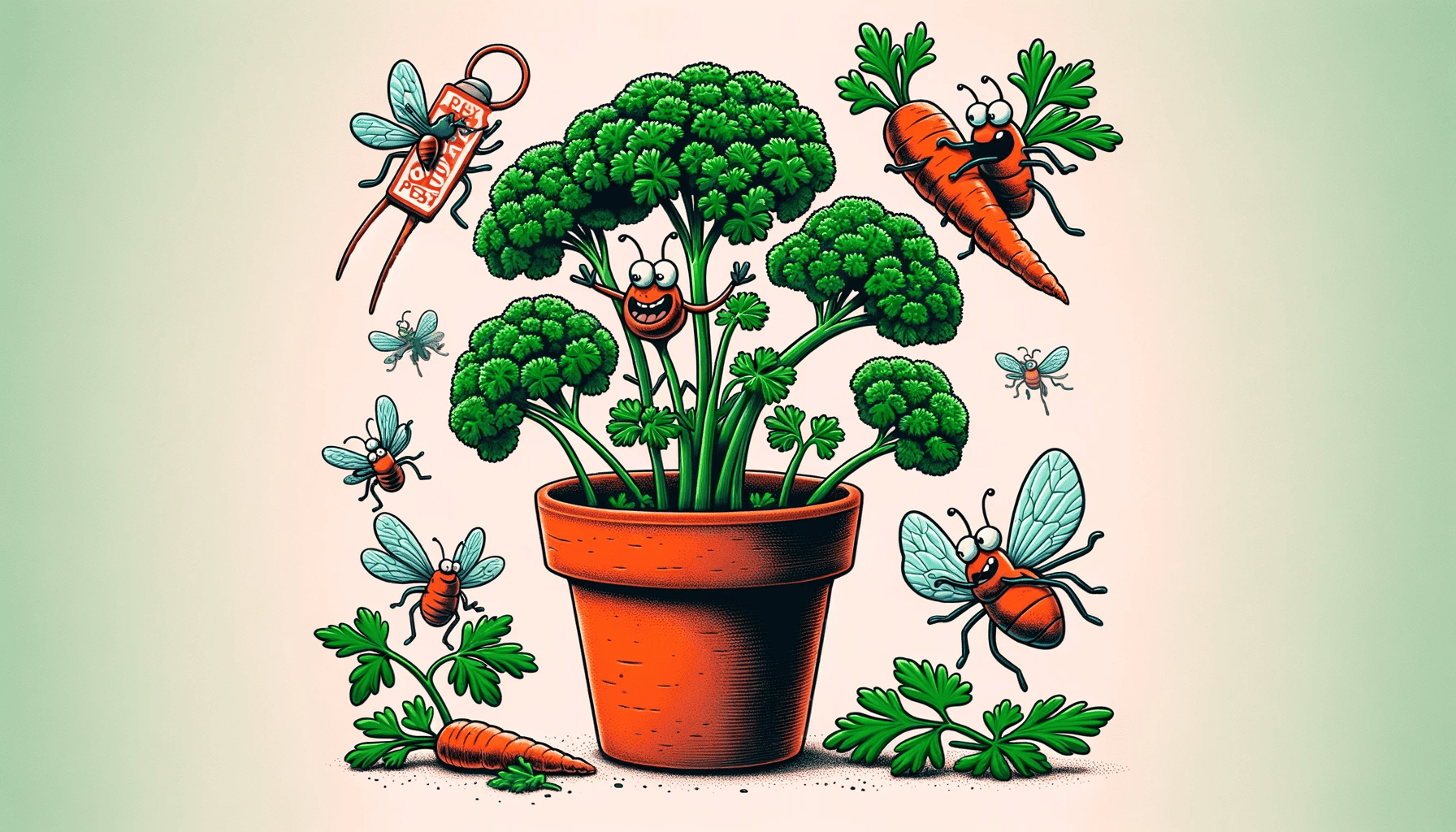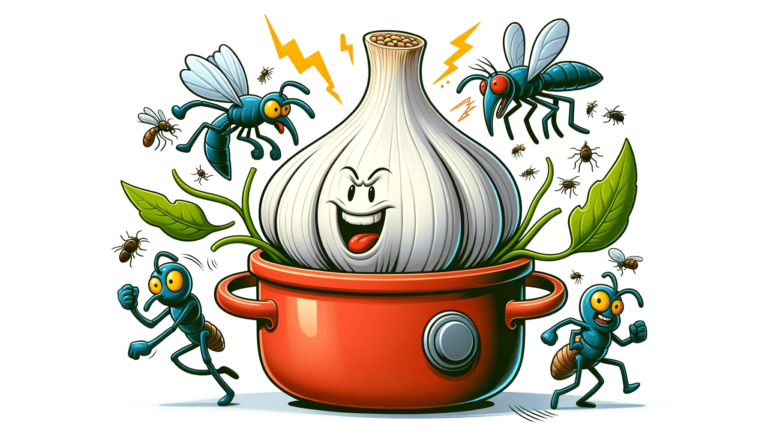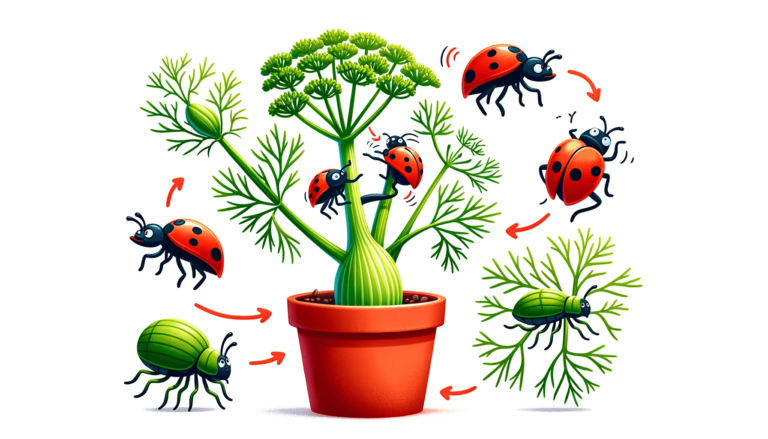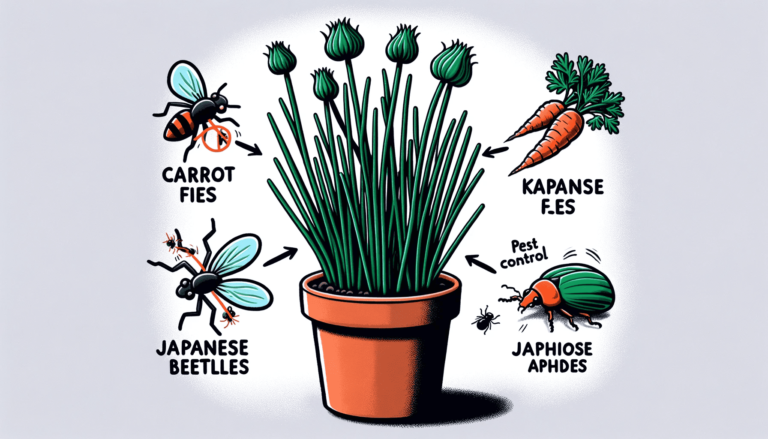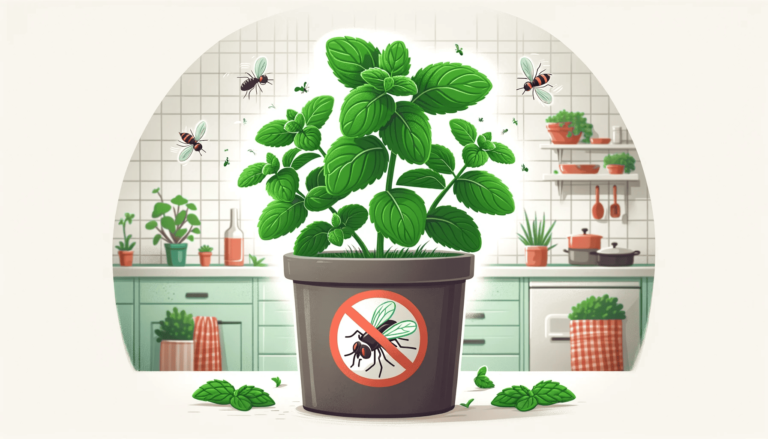Parsley: A Natural Ally Against Garden Pests
Ever wondered if your garden herbs could double as pest control? Let’s dive into parsley’s potential as a mosquito repellent.
Parsley isn’t just for garnishing; it contains natural compounds that might just keep those pesky bugs at bay.
The Insect Repelling Mechanism of Parsley
Parsley’s ability to repel pests comes from its strong scent and essential oils, which are distasteful to many garden insects.
These natural properties make parsley a valuable, non-toxic addition to any pest control strategy. Parsley plays a unique role in our gardens.
It attracts some creatures while repelling others. Which animals and insects are drawn to this herb, and which ones stay away?
Understanding this helps us use parsley effectively and maintain a balanced garden ecosystem.
Growing Parsley Indoors for Pest Management
Incorporating parsley into your indoor garden isn’t just for the sake of fresh herbs.
It’s a strategic move for natural pest prevention. Parsley thrives in pots with well-drained soil and partial sunlight.
A pot of parsley on your kitchen windowsill not only provides fresh herbs but also helps keep pests at bay. No garden space?
No problem!
Parsley grows well in pots. Ensure good drainage and keep the soil moist. Indoors, make sure it gets plenty of sun, or use grow lights.
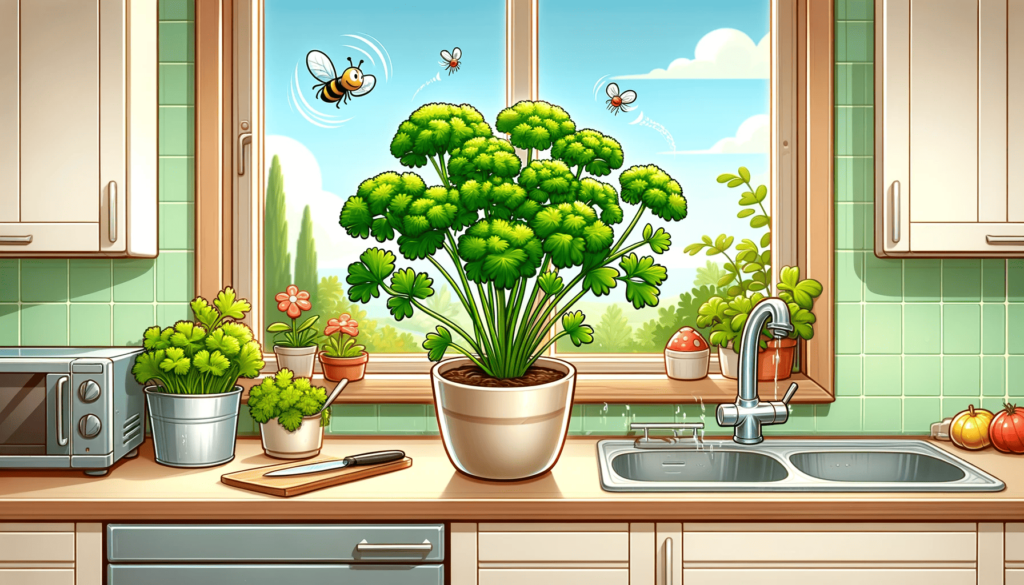
Using Parsley in Natural Pest Control
Beyond its growth, parsley can be used in various ways to combat pests.
You can place fresh leaves in areas where pests are a concern, or use dried parsley in sachets as a natural repellent.
Parsley is relatively trouble-free but watch out for fungal diseases. Good air circulation and disease-free seeds are key.
The biggest pest? Caterpillars from the black swallowtail butterfly. They’re a nuisance, but remember, they turn into beautiful butterflies!
Cultivating Parsley: A Step-by-Step Guide
Ready to plant some parsley? Here’s a quick guide:
- When to Plant: Start indoors 8-10 weeks before the last frost or outdoors 3-4 weeks prior.
- Selecting a Site: Choose a sunny spot with good drainage. Containers are a great alternative.
- Planting Details: Seeds should be about 1/4 inch deep and 6-10 inches apart.
Parsley loves the sun but appreciates a bit of afternoon shade in hotter climates. It prefers loamy, well-draining soil and regular watering.
Don’t let it dry out! A little fertilizer can go a long way, especially in the spring.
Parsley: Beyond the Garden – Pest Control and More
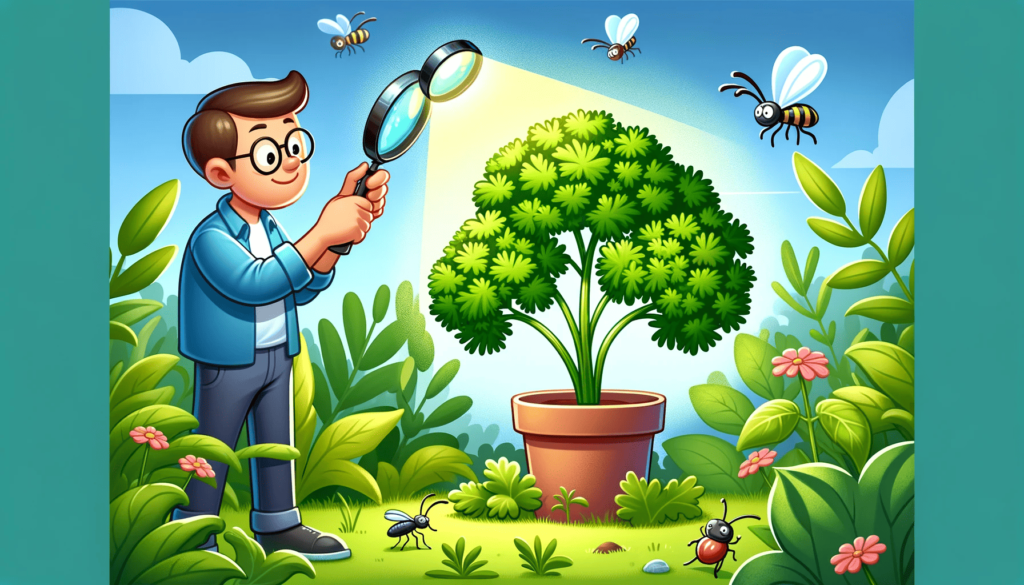
Here’s something cool – parsley attracts beneficial insects, including bees, and its blooms are a favorite for black swallowtail butterflies.
And for those wondering about parsley vs. cilantro, they may look similar but their leaves and flavors are distinctly different.
Harvest parsley when it’s about 6 inches tall, focusing on the outer leaves. Fresh stems can last a week in the fridge, and drying is a great way to preserve them longer.
Combining Parsley with Other Pest Control Methods
While parsley is effective on its own, it’s most efficient when integrated into a broader pest management plan. Pairing it with other natural repellents can create a more robust defense against pests.
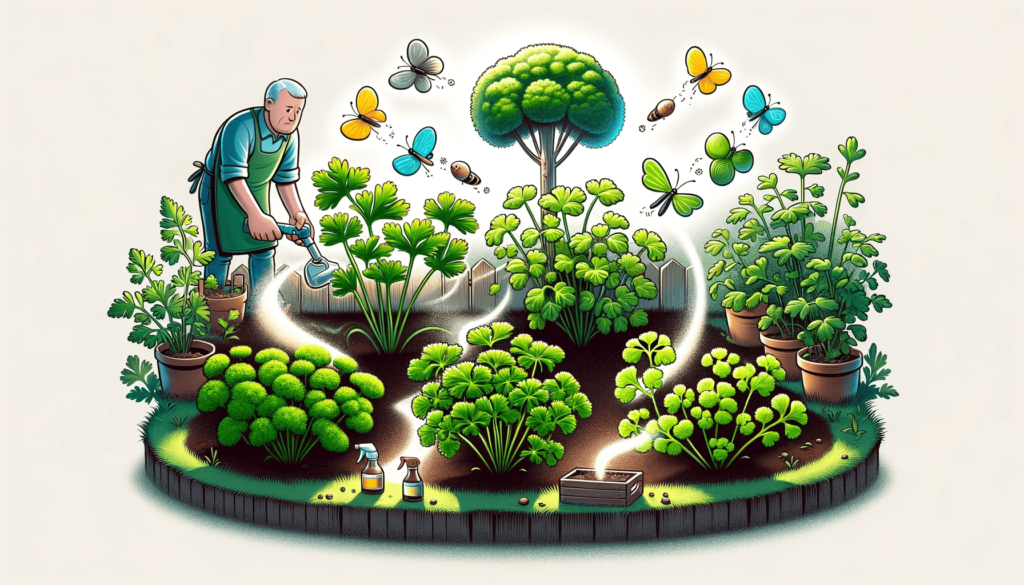
Parsley’s role in natural pest management is part of a greater approach. For a full overview of using plants for pest control, our guide “27 Indoor Plants Great for Pest Control” is an essential resource. It offers detailed information on a range of plants, each with unique pest-fighting capabilities.
Conclusion
Parsley is more than just a kitchen staple; it’s a practical and natural solution for pest control.
Its addition to your indoor garden not only adds flavor to your dishes but also contributes to a healthier, pest-free environment.
So next time you snip some parsley for your meal, remember its dual role in your kitchen and garden.
